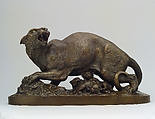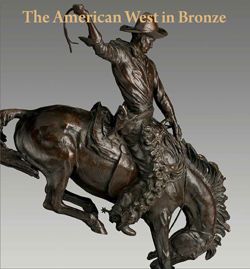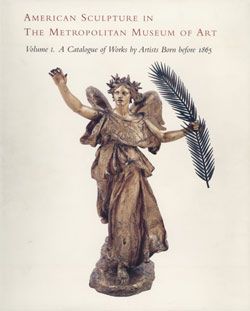Panther and Cubs
Henry Kirke Brown American
"Panther and Cubs" is derived from Brown’s "Indian and Panther" (whereabouts unknown) in which a muscular male figure is poised to strike a snarling panther and her cubs with a club. By not including the Indigenous figure in the statuette, the identity of the implied predator—whether human or animal—is unclear. In this first known American wildlife bronze, the emphasis shifts to the universal maternal instinct to protect one’s young. The device of the undetermined outcome, commonly employed in animal sculpture, allows viewers to complete the drama for themselves. The attention to detail, especially in the richly textured fur, and the emphasis on emotion ushered in a new era of naturalism in American sculpture. Brown likely produced this statuette in collaboration with the Ames Manufacturing Company in Chicopee, Massachusetts—a former munitions foundry that pioneered fine-art bronze casting in the United States in the early 1850s.
This image cannot be enlarged, viewed at full screen, or downloaded.



